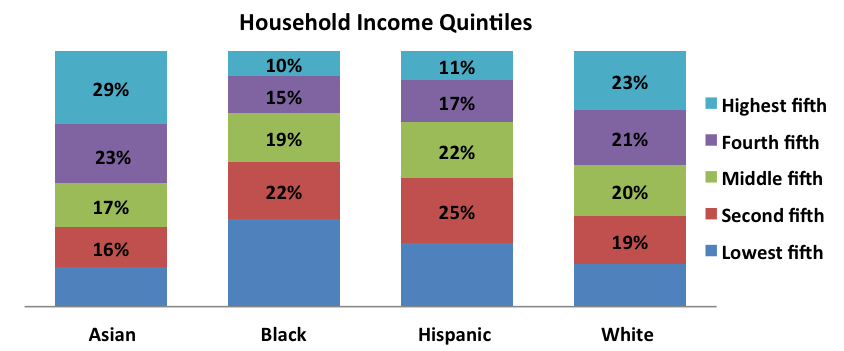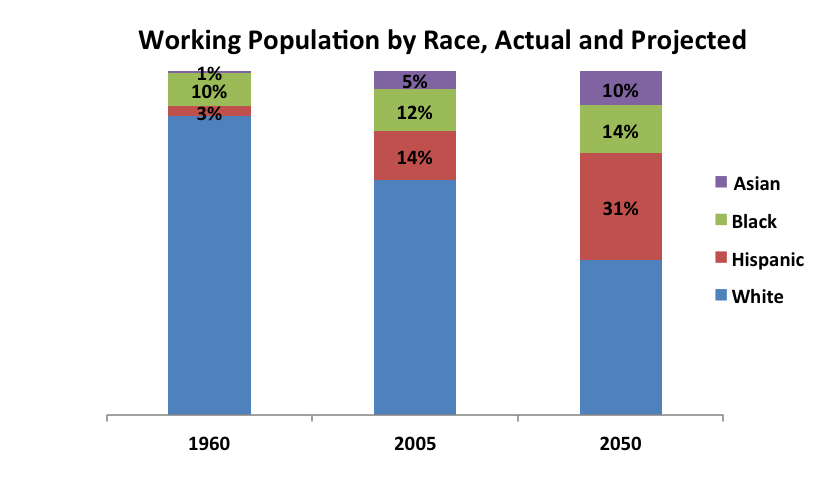The 1963 March on Washington for Jobs and Freedom was a multiracial movement. And like 50 years ago, today many of the disparities -- wealth, unemployment, and income -- are not only experienced by African Americans, but exist in varied forms among all people of color.
Unlike the African American population, the Hispanic population is rapidly growing with trends projecting Hispanics will comprise 30 percent of the country's population by 2050.
 Source: Census Bureau, Current Population Survey (2011)
Source: Census Bureau, Current Population Survey (2011)
But, facing wage stagnation, de facto segregation in housing, education and employment, as well as low wealth means people of Hispanic origin, similar to African Americans are facing rising economic inequality and insecurity.
Trends suggest that Asian and Pacific Islanders (API) have fared better economically relative to other racial groups in part due to highly educated immigrants. However, data's underreporting of poverty rates falsely represents the economic status of many Asian and Pacific Islanders and the similarities they share with other black and brown communities.
Asian Americans, on the aggregate level, may have a higher income than White Americans. However, API families also have more incomes per household. When broken down for family size, household income for Chinese, Filipino, Korean and Vietnamese immigrants is actually far lower than that of native-born whites. And if these disparities are left unaddressed the Asian American middle class will become increasingly unstable and shrink over time.
 Source: U.S. 2010 Census Project
Source: U.S. 2010 Census Project
Native Americans have experienced economic challenges comparable to African Americans for decades. And while poverty has decreased by 50 percent over the past 20 years, Native Americans continue to have among the highest poverty and unemployment rates in the United States.
According to US Census Bureau reports, the United States will reach a "minority-majority" by 2050. Consequentially, racial economic inequality will have a greater impact on our country than ever before. This shift in economic demographics coupled with a lack of economic mobility highlights significant challenges to America's middle class recovery in the future.
So, as was demanded at the 1963 March on Washington, today, we must reaffirm the need for full employment including job training programs, raising minimum wage to a living wage and high quality and integrated housing and education. These policies will get us on a path to creating a more equitable economy and nation for all.
This blog is part of the series, "50 Years after the March on Washington". To see the previous post, click here.